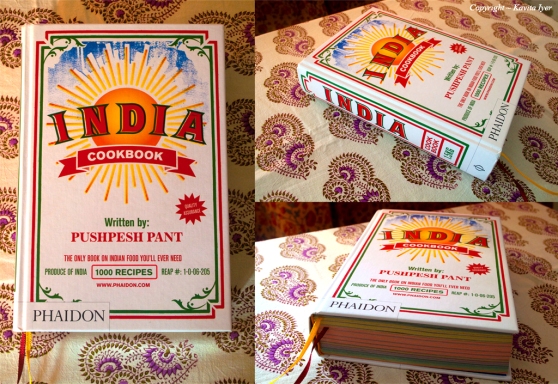
India Cookbook shares with us, the secrets behind Indian home cooking and features over 1000 recipes and 200 colour photographs and illustrations. The first 18 pages of the book is dedicated to the history, influences, techniques and tastes of each region, covering Kashmir, Punjab, Rajasthan, Agra and Delhi, Awadh, Bengal, Hyderabad, Tamil Nadu, Kerala, The Western Coast, and tribal food from Trans-Himalayan Region and The North and Northeast. It is an enlightening read which really showcases the diversity of our Indian cuisine, and more importantly seduces you with its exquisite descriptions.
India Cookbook isn’t like your typical cookbook because the author Pushpesh Pant is an academic who has spent the last 20 years researching and traveling the gastronomic regions of India to compile this remarkable culinary bible.
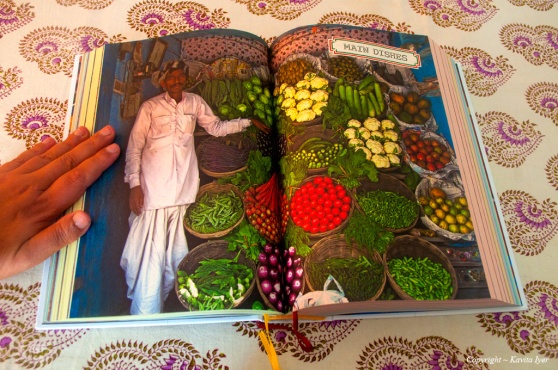
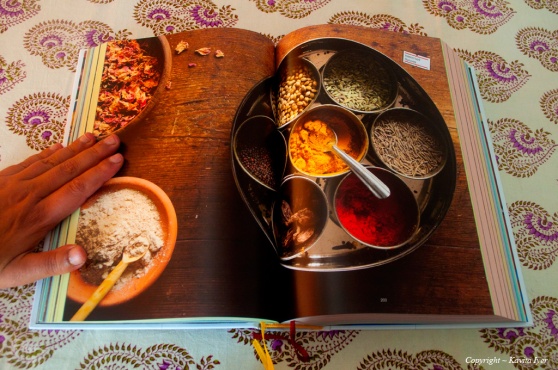
As you will see in these pictures i have shared, each section is colour-coded and grouped into categories of spices, mixtures and pastes; pickles, chutneys and raitas; snacks and appetisers (with sub-categories for vegetables, fish and seafood, and meat), main dishes (also with the same sub-categories as appetisers), pulses, breads, rice, desserts, drinks and guest chefs. But if you are looking for a specific recipe then you might have some trouble locating it (unless you have bookmarked it earlier) as this huge book does not have a proper (per recipe) index.
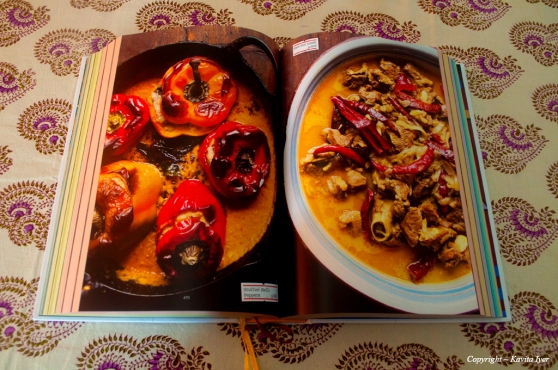
Since I have got the book, I think I have managed to skim through each of the 800 or so pages of this mammoth cookbook, a handful of times; but what I get out of it each time, is always different. Just so much has been condensed into this collection – the culture, thousands of authentic family recipes and the striking photos.
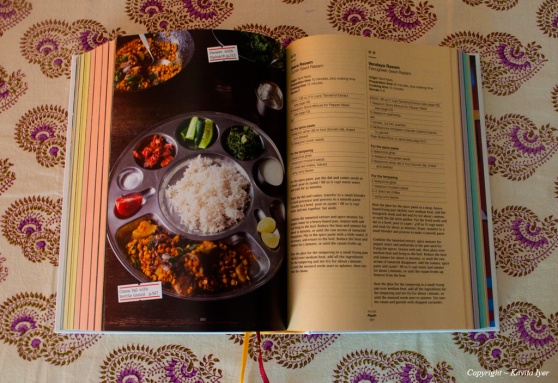

But this is not a picture book like so many other cookbooks. Though there is very nice photography throughout, most of the recipes are left up to your imagination. Being a visual person I would’ve liked at-least one photograph per recipe.
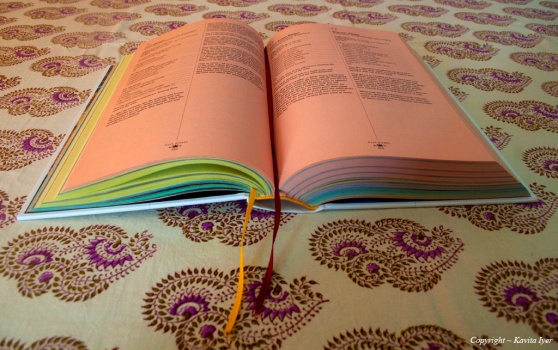
Having said that, I turn to Pant’s book regularly. When I need inspiration I know I will find it within India Cookbook. But then, I don’t follow many of the recipes exactly. Instead, I look at a recipe, think what a great idea and then I’m off to try to create something different or tweak the original recipe to my taste.
So I guess by now you are wondering what I ended up attempting to cook from this marvelous cookbook? Here are a few tried and tested recipes that I have adapted from the India Cookbook by Puspesh Pant.
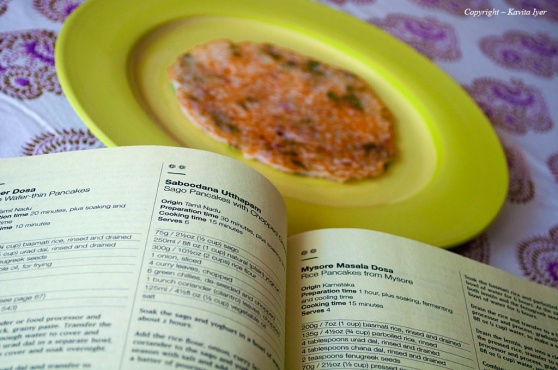
SABUDANA UTTAPPAM
Sago Pancakes with Chopped Greens
(Recipe Adapted from India Cookbook by Pushpesh Pant)
These pancakes are crisp on the outside and melt-in-the-mouth soft at the center. Nutritious and filling they make for an amazing breakfast or snack for kids. I bet once you try them, they will become a staple in your home.
Origin: Tamil Nadu
PREP: 30 mins plus soaking time COOK: 20 mins TOTAL: 1 hour
INGREDIENTS:
¼ cup Sabudana/Sago
½ cup natural yogurt
1 cup rice flour
1 onion (thinly chopped)
1 green chilli (thinly chopped)
2 small sprigs of curry leaves
2 tablespoons coriander leaves (thinly chopped)
Salt to Taste
Clarified butter/Ghee for cooking
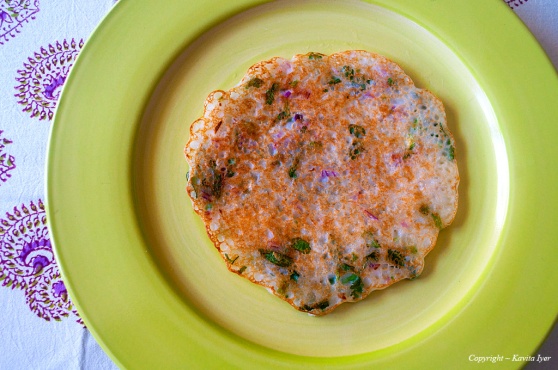
DIRECTIONS:
Soak the sabudana in ½ cup water overnight.
In the morning add the yogurt, rice flour, onion, green chilli, curry leaves and coriander leaves. Then season with salt and add enough water to make a batter of pouring consistency. Let it soak for 1 hour.
Heat a little ghee on a frying pan (skillet) over medium-low heat and pour a ladleful of the batter in the frying pan once it is hot. Spread it over the base like a pancake and fry for about 2 minutes or until golden brown. Flip over with a spatula and fry the other side for a further 2 minutes.
Transfer to a serving plate and repeat with the rest of the mixture.
Bon Apetite.
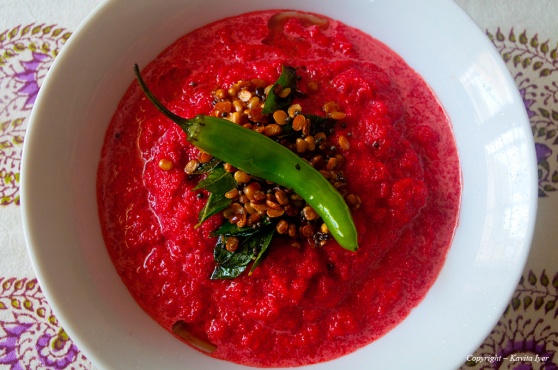
BEETROOT THUVIYAL
Beetroot (Beet) Chutney
(Recipe Adapted from India Cookbook by Pushpesh Pant)
Sweet, tangy n spicy, this delicious chutney goes very well with dosas/uttappas (savoury pancakes), rotis/parathas (breads), hence makes for a great side dish.
Origin: Tamil Nadu
PREP: 20 mins COOK: 5 mins TOTAL: 25 mins
INGREDIENTS:
1 Beetroot (peeled and grated)
2 tablespoon grated coconut
1 long green chilli (thinly chopped)
1 small green chilli (for garnish)
2 tablespoon tamarind extract
1 teaspoon mustard seeds
1 teaspoon urad dal
½ teaspoon asafoetida powder
2 small sprigs curry leaves
Salt to Taste
Cold Pressed Coconut oil for Cooking and Tempering
DIRECTIONS
Heat 1 teaspoon coconut oil in a frying pan (skillet) over medium flame. Add the beetroot and fry for about 5 minutes or until tender. Let it cool down. Then add the beetroot, coconut, green chilli, tamarind extract; season with salt and blend it in a blender or food processor. Add 2-3 tablespoons water for smooth consistency. Remove in a bowl once done.
For the tempering heat ½ teaspoon coconut oil over low-medium flame. Once oil is hot add mustard seeds. Let them splutter. Then add urad dal and fry until light brown. Switch off the flame and add curry leaves and a small green chilli.
Garnish this tempering on the chutney and your Beetroot Thuviyal is ready to eat. This should be eaten immediately.
Hope you enjoyed the review and the recipes I have featured here from the India Cookbook by Pushpesh Pant. Do try them and give me your feedback. Also look out for more exciting recipes in the Part 2 of this feature.
“The only book on Indian food you’ll ever need.” is written boldly on the front cover. Though I don’t know about that, I definitely would not want to be without my copy of the India Cookbook.
Thank you for visiting.
Book Title : India Cookbook
Author: Pushpesh Pant
Rating: 4/5




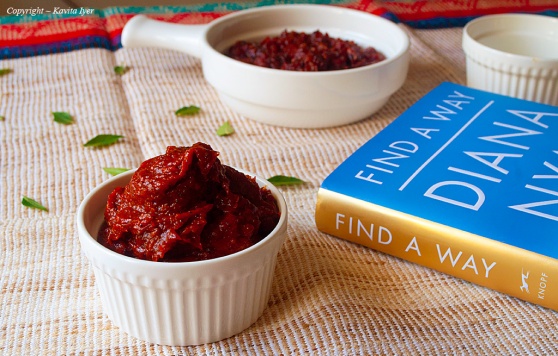
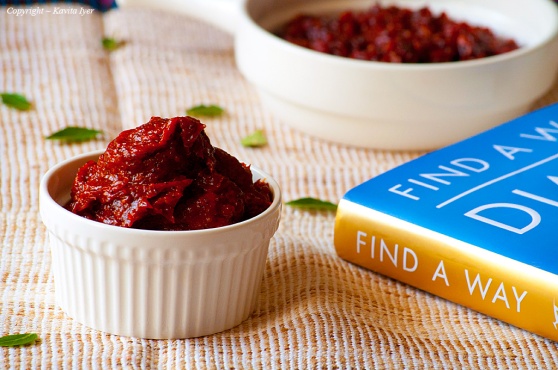
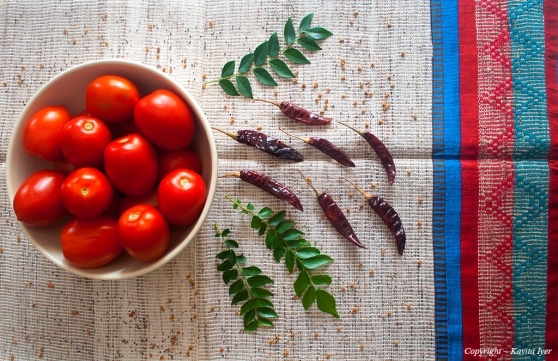
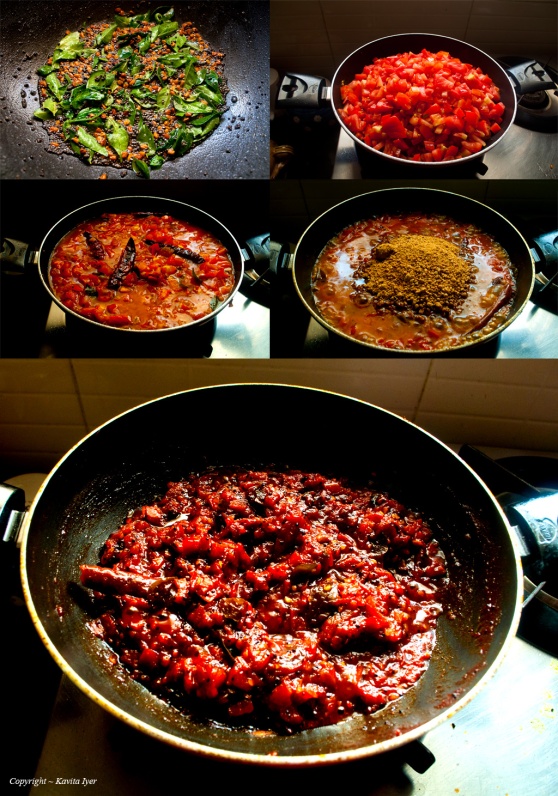


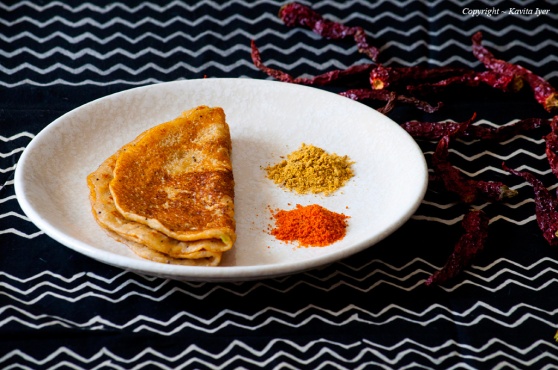
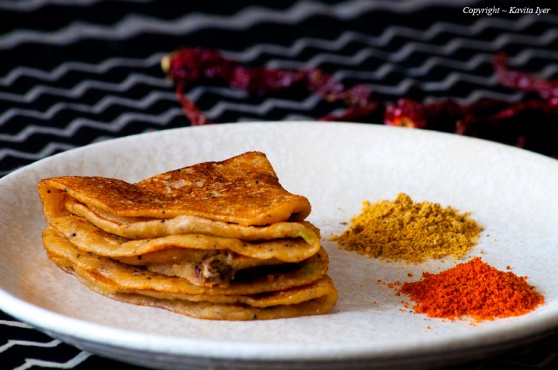
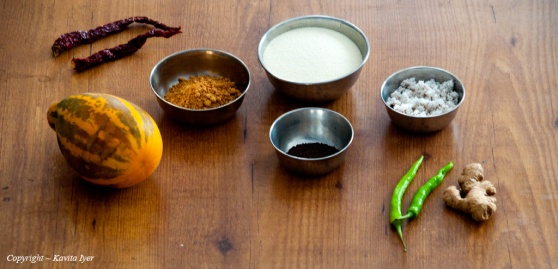
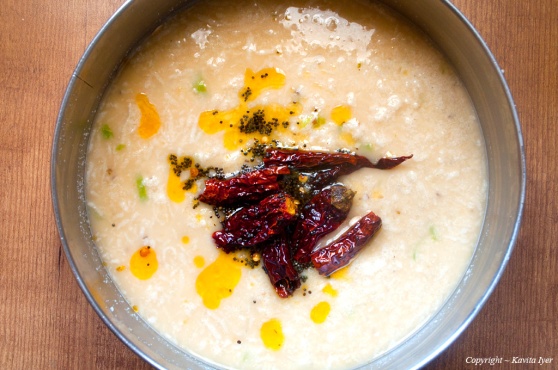
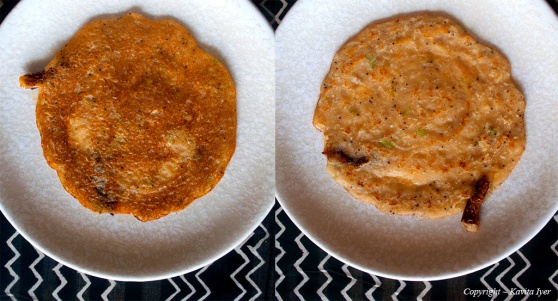
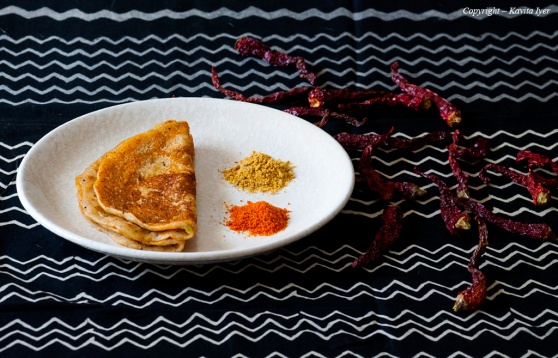

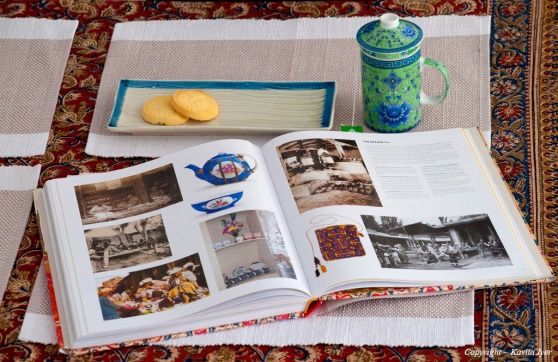
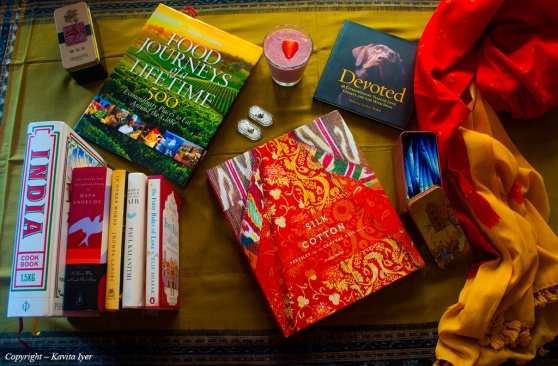













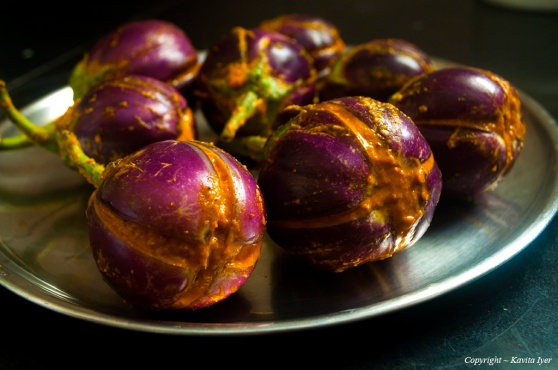











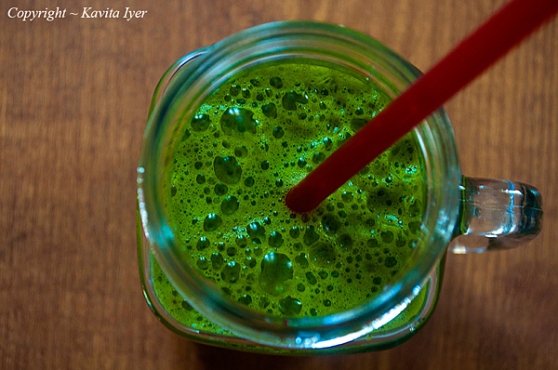
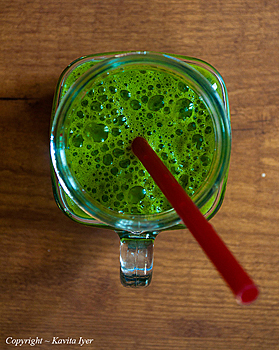 Ingredients:
Ingredients: